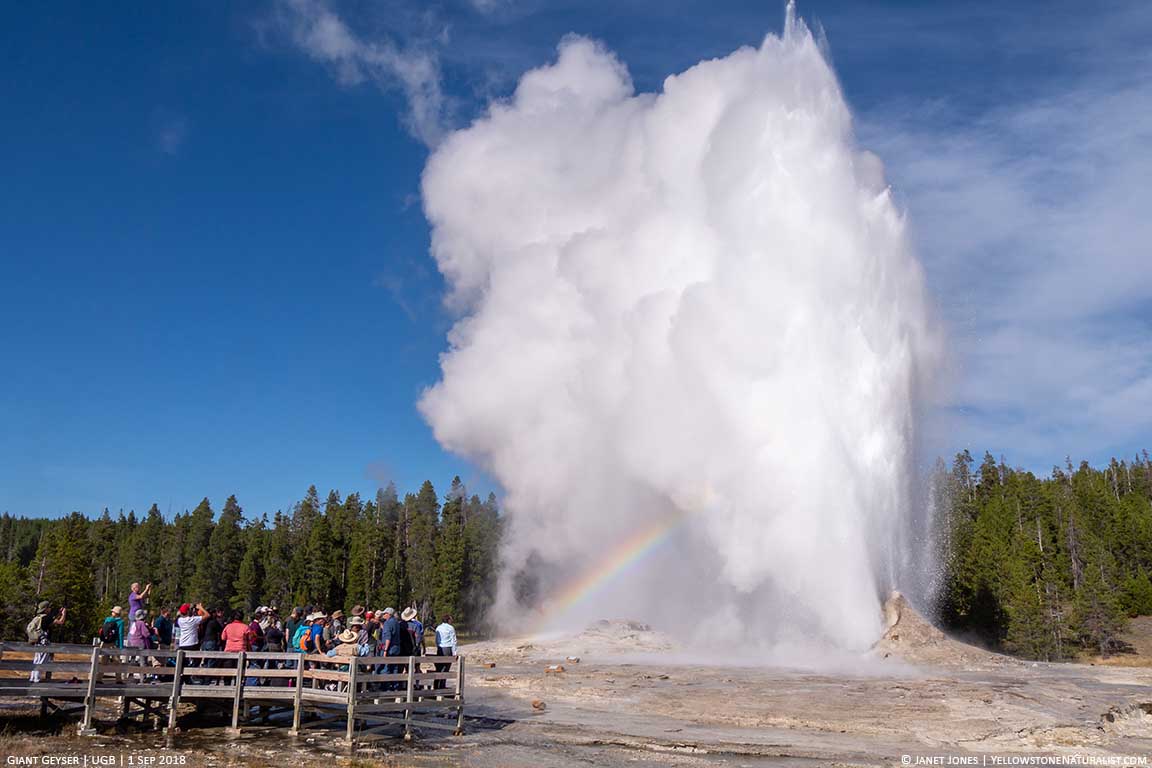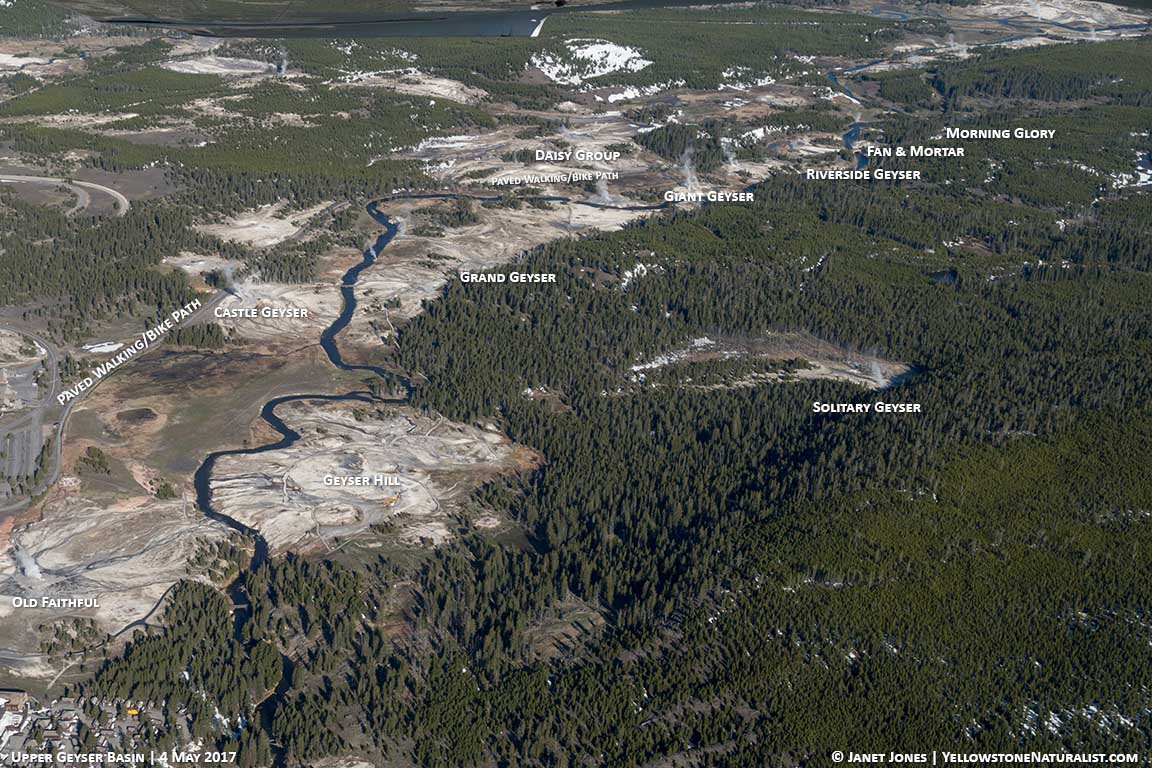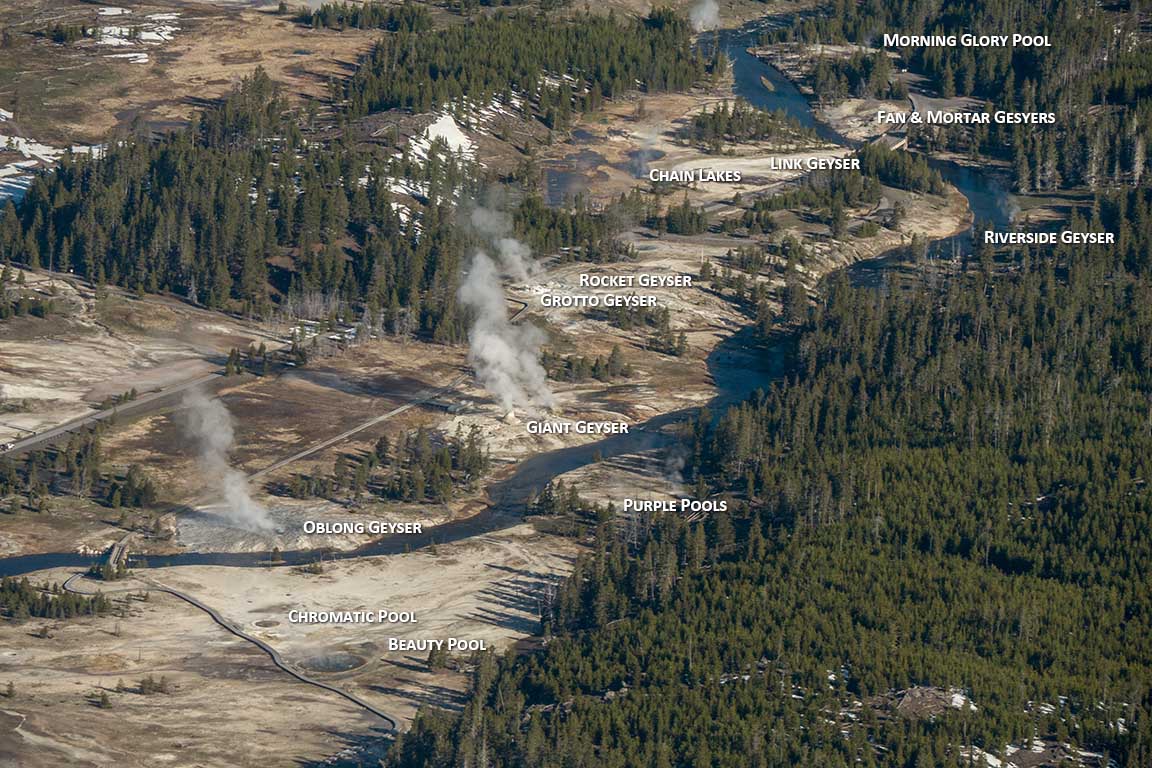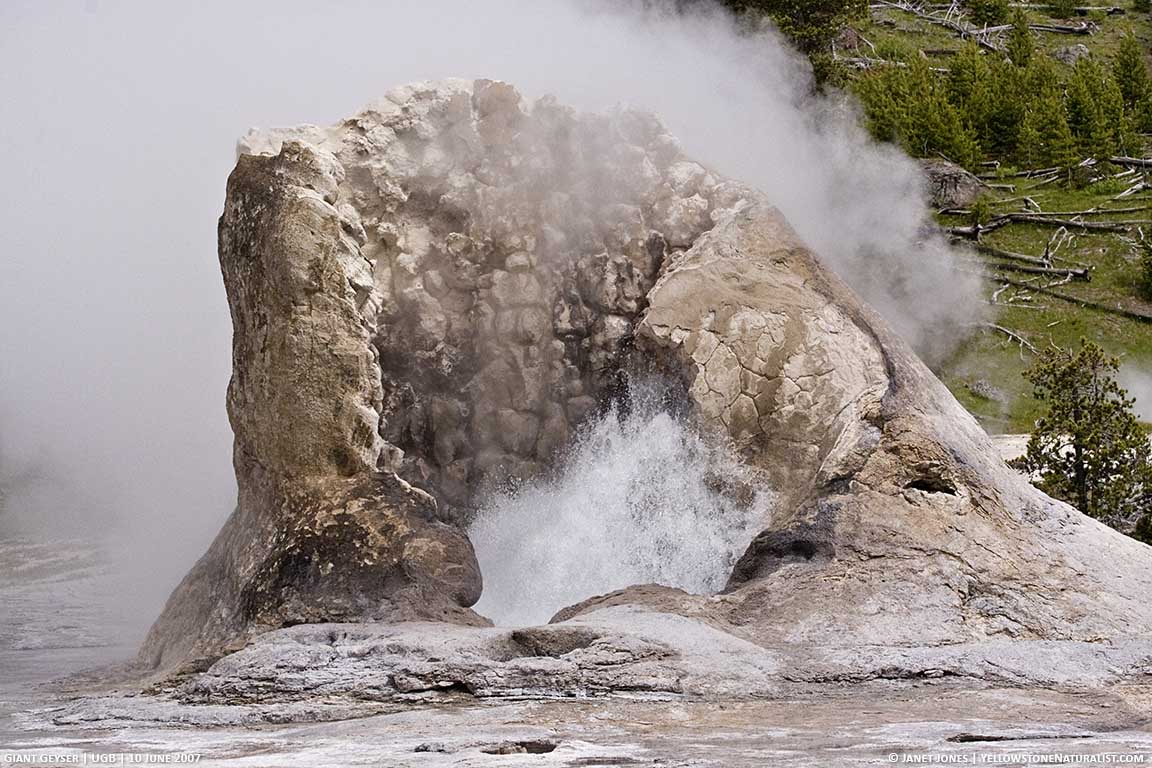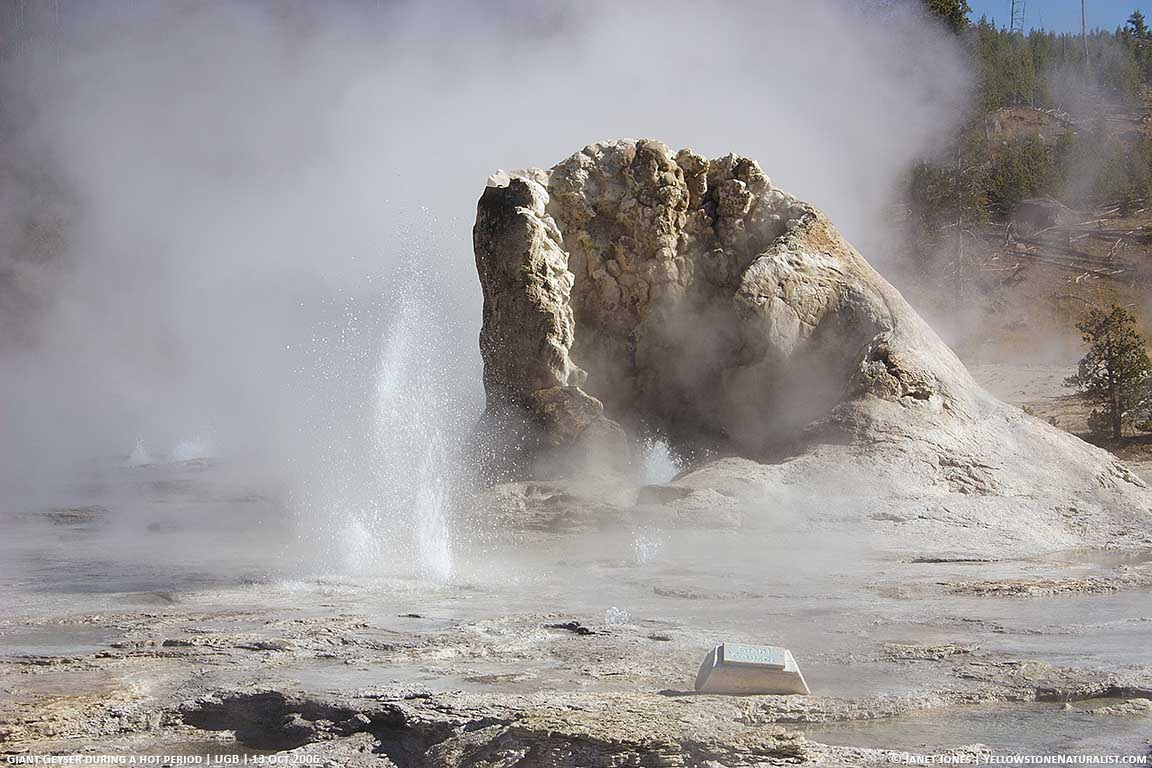Get to know Giant Geyser
Giant Geyser is the largest geyser in the Upper Geyser Basin and second largest in the world, only being beaten out by Steamboat Geyser over at Norris Geyser Basin. Since I’ve written about Giant Geyser before, in this article, I’ll drill down to just the bare basics here.
Giant Geyser is currently in an active phase. This started in early 2018 after a couple of eruptions in late 2017. This active phase took a bit to get going, but Giant has been as regular as every 5 to 9 days. There’s no way to know how long this will last. And to have Steamboat also in an active phase is unusual. That’s making it difficult for people to decide what geyser basin to hang out in on their vacations.
THE BASICS:
- Currently the second tallest geyser in the world.
- Eruptions can reach a height of 200-250 feet and last an hour (including the steam phase).
- Is presently in an active phase with eruptions occurring every 5-9(ish) days and is not predictable.
- Is about a 20-minute walk from Old Faithful (less if you walk fast).
WHERE IT’S LOCATED
Giant Geyser is farther “down basin” from Grand Geyser. You can reach Giant by either heading to the Grand area via Geyser Hill (turning at Lion Geyser) or walk to Castle Geyser and turn right. OR there’s a third route. Walk past Castle Geyser until you reach the boardwalk turnoff at Grotto Geyser, walking back to the observation platform for Giant Geyser.
ABOUT THE CONE
This is an enormous cone, letting us know that Giant Geyser has been active for a long time. The opening on the side of the cone must have happened with an incredibly powerful eruption sometime in its ancient past as this opening has been here since the early expeditions in the late 1800s. The cone is about 10-12 feet tall and 8 feet wide. This cone sits on a 25-foot platform (raised area of rock) that has other, smaller geysers on it as well.
NEIGHBORS AND CONNECTIONS
On the platform are Bijou and Catfish Geysers, Mastiff Geyser, lots of small bubblers that have individual names, the Southwest Vents and Turtle Geyser. Also known or suspected to be connected to Giant Geyser are Oblong Geyser, The GIP (Giant’s Indicator Pool), Variable Spring, the Grotto Group and potentially the Purple Pools. This is a well-connected geyser.
WHAT TO WATCH FOR
The primary indicator of a potential eruption is what’s known as a “hot period.” This is when
- Bijou Geyser (generally on most of the time) shuts off. This indicates that water is rising on the platform and if energy is strong enough, the water can be seen in Mastiff Geyser and the GIP. Ideally, Mastiff’s water should rise to overflowing.
- Feather Geyser (the tallest of those little ones in front of Giant’s cone) starts to erupt. It’s a tall, slender jet with another smaller one next to it (known as Feather’s Satellite).
- Seeing vertical jets in Giant’s cone is a good thing. The angled jets happen pretty much perpetually whether Giant Geyser is active or not.
- If all of this stays on and the other bubblers on the platform start AND you have overflowing water from Mastiff Geyser, you might want to stay a bit longer.
Hot periods are simply opportunities for Giant to erupt. They can stop at any point in this cycle. If you catch one, know that if you time them, to start timing with the start of Feather Geyser and end them with the end of the eruption of Feather Geyser.
ERUPTIONS
If the hot period builds into an eruption, you’ll start to see surges of water over Giant’s cone and potentially also from Mastiff Geyser. If you think of it, look to the right to Turtle Geyser, and you might catch it erupting a foot or three.
While all of this can suddenly stop, often at this point, Giant will suddenly surge skyward to a height of 200-250 feet. This initial surge is the tallest, and then like other geysers, the column of water drops to a lower level to finish out the eruption. Eruptions can last up to an hour that includes the ending steam phase.
Below is a video of a hot period that did lead up to an eruption first from Mastiff and then joined by Giant. The video ends at the beginning of the eruption simply because the water was headed toward where I stood and I really didn’t care to get drenched, but it was a lovely eruption!
IN CONCLUSION
While there’s much more to say about Giant Geyser, each active phase seems to behave a bit differently, and there’s much more for us to learn.
